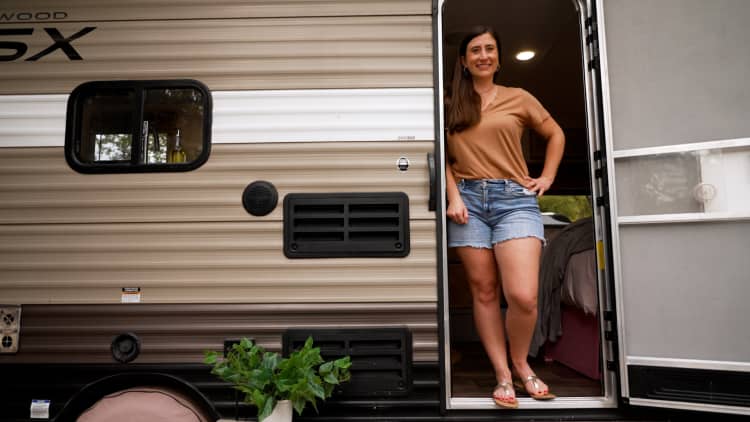Experts generally say emergency savings should cover three to six months of living expenses. But after years of high inflation, this goal might seem far from attainable for many Americans.
In fact, nearly 1 in 4 U.S. adults say they have no emergency savings, a recent Bankrate survey found.
If you're starting an emergency fund from scratch, don't be intimidated by the prospect of saving months' worth of expenses all at once, says Will Kellar, a certified financial planner and partner and lead advisor at Human Investing.
"Emergency savings demands a personalized approach," he says. "While the conventional wisdom endorses three to six months of living expenses, I persistently advocate that any amount is superior to none."
Kellar recommends breaking down your emergency savings goals into bite-sized amounts — and celebrating wins where you can. Start by putting aside $50 to $100 a month, he says, and work your way toward saving one month of living expenses. That's a solid starting point, Kellar says.
"An entire month of expenses serves as a buffer against immediate shocks, affording space to navigate crises without plunging into debt," he says. "Regardless of their financial situation, I urge everyone to prioritize this humble yet essential goal."
Why now is a good time to build your emergency fund
While 63% of Americans say they're saving less due to rising costs, a series of interest rate hikes from the Federal Reserve means banks are offering their most attractive rates to savers in years, says Bankrate senior economic analyst Mark Hamrick.
"One of the benefits of that is we're now in an environment where people who shop around for the highest yields can get 4 or 5% [annual percentage yield] on a number of different savings products," he says.
While traditional savings accounts offer an average interest rate of 0.46%, many high-yield savings accounts carry interest rates of 4% or higher — making them ideal for growing your savings faster. These interest rates — also known as annual percentage yield, or APY — fluctuate alongside the Federal Reserve's benchmark interest rate.
Certificates of deposit, or CDs, also carry higher APYs than traditional savings accounts, with top CD rates ranging from 4.45% to 5.50%, according to Bankrate. CDs are a type of savings account where money is deposited for a predefined amount of time at a fixed interest rate and can't be withdrawn prematurely without incurring a penalty.
No matter which savings vehicle you choose for your emergency fund, putting away something is better than nothing, Kellar says.
"In essence, there's no universal formula for emergency savings," he says. "Having some cash can prevent someone's financial wellbeing and what they've worked so hard to build from going up in smoke."
Want to land your dream job in 2024? Take CNBC's new online course How to Ace Your Job Interview to learn what hiring managers are really looking for, body language techniques, what to say and not to say, and the best way to talk about pay. CNBC Make It readers can save 25% with discount code 25OFF.
Plus, sign up for CNBC Make It's newsletter to get tips and tricks for success at work, with money and in life.



